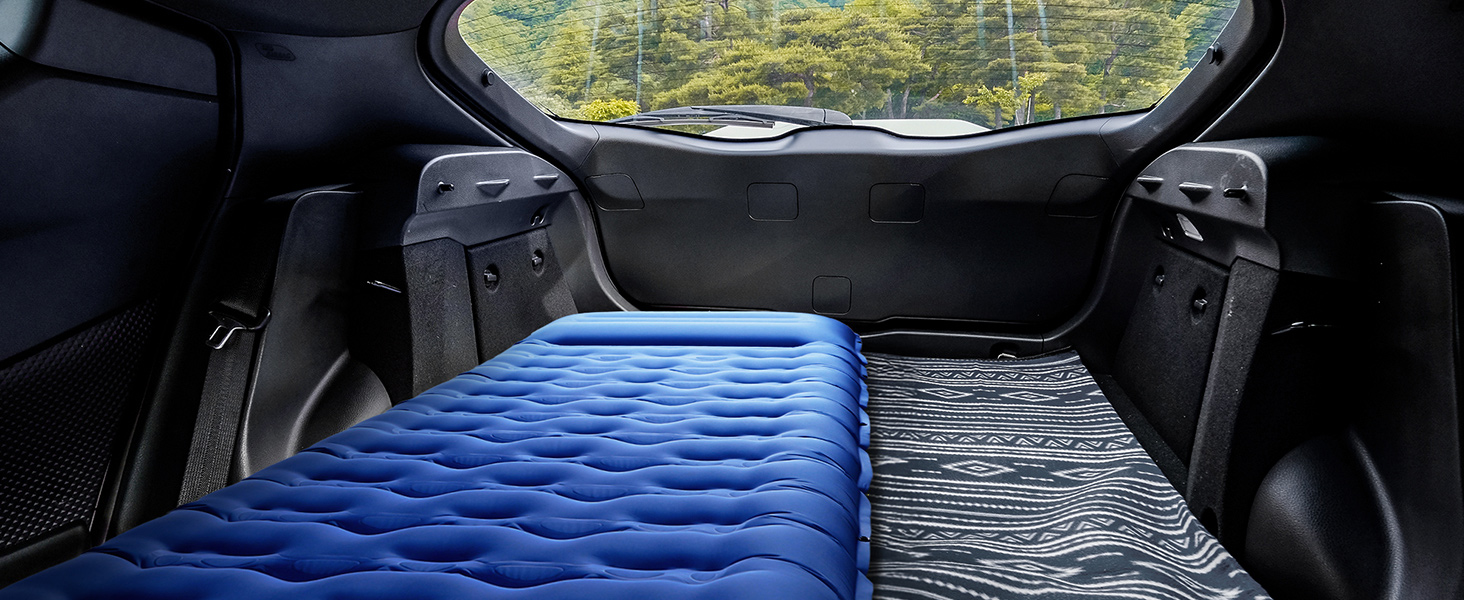When it comes to camping, a good night’s sleep can make or break your trip. A camping sleeping pad is more than just a cushion—it provides comfort and insulation from the cold ground. But not all sleeping pads are created equal. The best choice depends on where, when, and how you plan to camp.
Here’s a guide to help you choose the right sleeping pad for different environments:

1. Car Camping
If you’re driving to your campsite and weight isn’t an issue, comfort should be your priority.
- Best Choice: Thick self-inflating pads or deluxe air pads.
- Why: They provide superior cushioning, excellent insulation, and plenty of space. You won’t mind if they’re bulkier since you don’t have to carry them far.
- Extra Tip: Look for wide or extra-long options if you move around a lot while sleeping.
2. Backpacking
Backpackers need to balance weight, packability, and comfort.
- Best Choice: Lightweight air pads or compact self-inflating pads.
- Why: They offer a good mix of comfort and insulation while packing down small enough to fit in a backpack.
- Extra Tip: Always check the R-value (warmth rating). For three-season backpacking, aim for R-value between 2–4.
3. Winter Camping or Snow Conditions
Cold ground quickly drains body heat, so insulation is critical.
- Best Choice: High R-value insulated air pads or self-inflating pads, ideally combined with a closed-cell foam pad underneath.
- Why: Layering pads adds warmth and protects inflatable pads from punctures.
- Extra Tip: Choose an R-value of 5 or higher for snow camping.
4. Minimalist or Ultralight Trips
For thru-hikes, bikepacking, or long treks, weight savings matter most.
- Best Choice: Ultralight air pads or short closed-cell foam pads.
- Why: Foam pads are virtually indestructible and ultralight, while air pads can weigh under a pound yet still provide comfort.
- Extra Tip: Many ultralight hikers use a ¾-length pad and place extra clothing or backpacks under their feet for insulation.
5. Family Camping or Group Trips
When camping with kids or multiple people, convenience is key.
- Best Choice: Double camping sleeping pads or wide air mats.
- Why: Sharing one pad keeps you closer together, reduces gear bulk, and ensures no one rolls off onto the cold ground.
- Extra Tip: Look for built-in pumps or quick-inflate systems to make setup easier for groups.
6. Festivals, Casual Camping, or Glamping
Here, comfort and ease of use are more important than weight or packability.
- Best Choice: Extra-thick air mattresses or luxury self-inflating pads.
- Why: They provide a bed-like experience with plush cushioning, perfect for relaxing weekends.
- Extra Tip: Pair with regular sheets and blankets for a home-like feel.

Popular Camping Sleeping Pad Brands Compared
Here’s a quick look at how some well-known sleeping pads stack up for different camping styles:
| Brand / Model | Best For | Key Features | Pros | Cons |
|---|---|---|---|---|
| Therm-a-Rest NeoAir Xlite NXT | Ultralight backpacking | 3” thick, R-value ~4.5, packs very small | Lightweight, warm, durable | Expensive, can be crinkly/noisy |
| NEMO Tensor Insulated Pad | Backpacking & 3-season use | 3” thick, R-value ~4.2, quiet material | Comfortable, quiet, compact | Not as warm for deep winter |
| Big Agnes Q-Core Deluxe | Comfort-focused camping | 3.5” thick, quilted top, R-value ~4.3 | Plush comfort, wide options | Heavier than ultralight pads |
| OGERY Double Sleeping Pad | Family & couple camping, versatile use | 6” thick, built-in foot pump, pillows included | Extra spacious, easy to inflate, budget-friendly | Bulkier than single pads, heavier for backpacking |
FAQ: Camping Sleeping Pads
Q1: What R-value do I need for a camping sleeping pad?
A: R-value measures insulation. For summer camping, an R-value of 2–3 is usually enough. For spring and fall, go for 3–4.5. For winter or snow camping, look for 5 or higher to stay warm.
Q2: What’s the difference between air pads and foam pads?
A: Air pads are inflatable, compact, and usually more comfortable, but can be punctured. Foam pads are more durable, cheaper, and don’t require inflation, but they’re bulkier and less cushioned.
Q3: Are double sleeping pads good for camping?
A: Yes! Double pads like the OGERY Double Sleeping Pad are great for couples or families who want extra space and comfort. They’re bulkier than single pads, so they’re best for car camping or short hikes rather than ultralight backpacking.
Q4: How do I keep my sleeping pad from sliding in the tent?
A: Choose pads with textured or non-slip bottoms. You can also place a thin foam sheet or a grippy mat under the pad to keep it from moving around on the tent floor.
Q5: How do I clean and store a sleeping pad?
A: Wipe it down with a damp cloth and mild soap after trips. Make sure it’s fully dry before storage. Store air pads loosely inflated in a cool, dry place to protect the valves and material.
Final Thoughts
Choosing the right camping sleeping pad depends on your environment, activity, and comfort needs. Think about:
-
Where you’re camping (car vs. backcountry vs. snow)
-
Season and temperature (warm weather vs. winter)
-
How much weight you’re willing to carry
A well-chosen sleeping pad not only improves comfort but also keeps you warm, helping you wake up refreshed and ready for adventure.
Looking for a versatile option? A double camping sleeping pad is perfect for couples, family camping, and anyone who wants extra space without sacrificing portability.

Share:
How to Choose a Sleeping Pad for Camping and Backpacking
Stay Cool, Stay Green: How the OGERY F6 Tent Fan Helps You Go Eco-Friendly